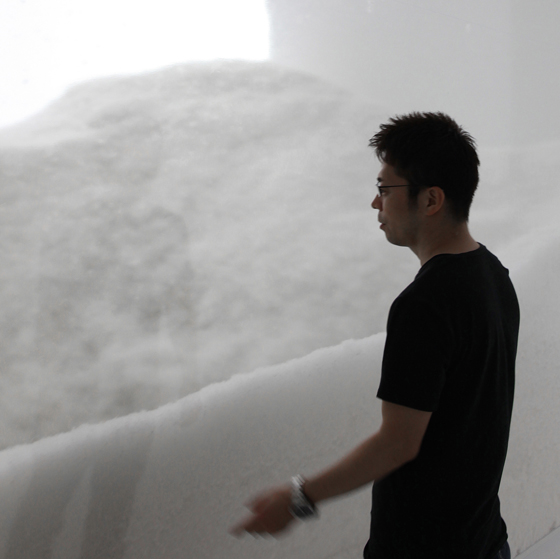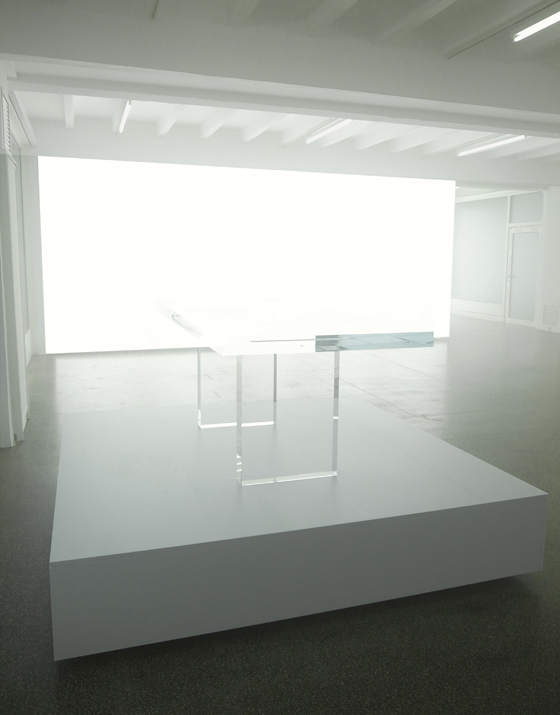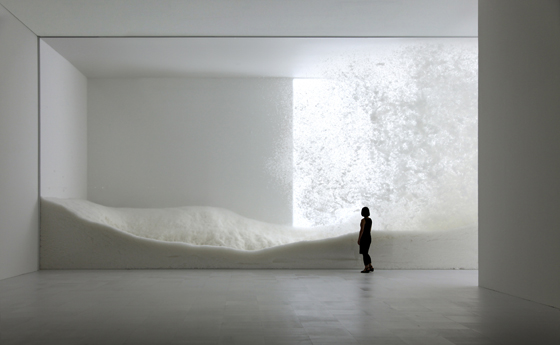The Bearable Lightness of Being: Architonic meets Tokujin Yoshioka at imm cologne
Texte par Simon Keane-Cowell
Zürich, Suisse
25.01.11
'Maybe I don't like objects.' It's not every day you hear such a statement from a designer, particularly one as celebrated as Tokujin Yoshioka, who was recognised as A&W Designer of the Year 2011 during this year's imm cologne, But, then again, there's a certain (pleasing) contradiction in the design language of the Japanese creative's work, which, through its ongoing engagement with the ideas of transparency and lightness, gives expression to objects that sit somewhere between presence and absence. Architonic met up with Yoshioka in Cologne to trip the light fantastic.
There's a photomontage by Marcel Breuer from his Bauhaus years that articulates clearly the modernist fixation with formal lightness. The short, photostrip-like series of images features a (masked) woman sitting first on a traditional four-legged chair, then on one of Breuer's, at the time, radically reduced tubular-steel cantilevered pieces and, finally, thanks to some pre-Photoshop literal cutting and pasting, on a 'Luftsäule' (or 'column of air'), her body, in a seated position, resting on what appears to be an entirely invisible structure. This progression from a certain formal mass in furniture design to the fantasy of nothingness, of pure visual absence, is as entertaining as it is challenging. It raises an eyebrow and a smile in equal measure.
Let there be light: Japanese designer Tokujin Yoshioka's paean to transparency and lightness in the form of his retrospective at the Cologne Kunstverein, which coincided with him being named A&W Designer of the Year 2011
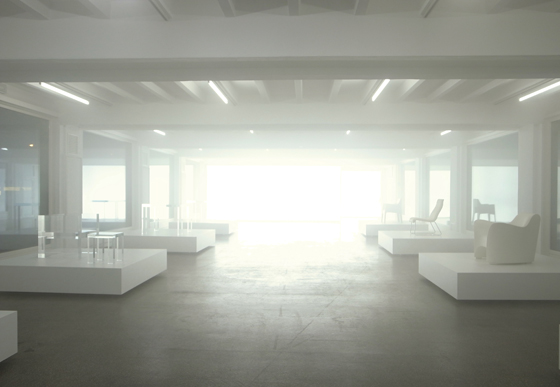
Let there be light: Japanese designer Tokujin Yoshioka's paean to transparency and lightness in the form of his retrospective at the Cologne Kunstverein, which coincided with him being named A&W Designer of the Year 2011
×Anyone visiting Cologne's Kunstverein during last week's international design fair was served up a generous (yet amazingly light) helping of this 'Look Ma, no hands!' take on designing furniture in the form of master of transparency Tokujin Yoshioka's retrospective to mark his winning of the coveted title of A&W Designer of Year 2011. The space's full-height glazing, back-lit wall panels and rather theatrical clouds dry ice all served to foreground the visual levity of the work on show: chairs and other furniture types designed over the last decade that, either through their form or material, occupy a liminal position between being there and gesturing towards a denial of their presence.
Tokujin Yoshioka in front of his installation 'The Snow' at Tokyo's Mori Art Museum, 2010
It can be said of a lot of designers that they settle into a series of expressive idioms that they find comfortable, but less common are examples of creative practitioners who maintain a resolutely singular vision in the aim of their work over time. Yoshioka, whose position could almost be described as anti-fashion, returns again and again to the notions of visibility, invisibility, light and lightness in his projects, be they commercial commissions for such furniture manufacturers as Moroso, driade and Kartell, product design, self-motivated experiments or temporary installations.
Yet Yoshioka's continued ploughing of this creative furrow isn't simply for the sake of it. For the Japanese designer, there always has to be something at stake. 'It's important to be careful about what you bring into this world,' he tells when we meet in Cologne to discuss his work. 'This includes the option of not creating anything.' A somewhat apposite statement considering the 'now you see it, now you don't' nature of a lot of his work.
The title of Yoshioka's 2010 collection for Italian manufacturer Kartell, 'The Invisibles', engages with the fantasy of furniture that escapes the visual grasp of the eye, as explored in the past by, among others designers, Marcel Breuer
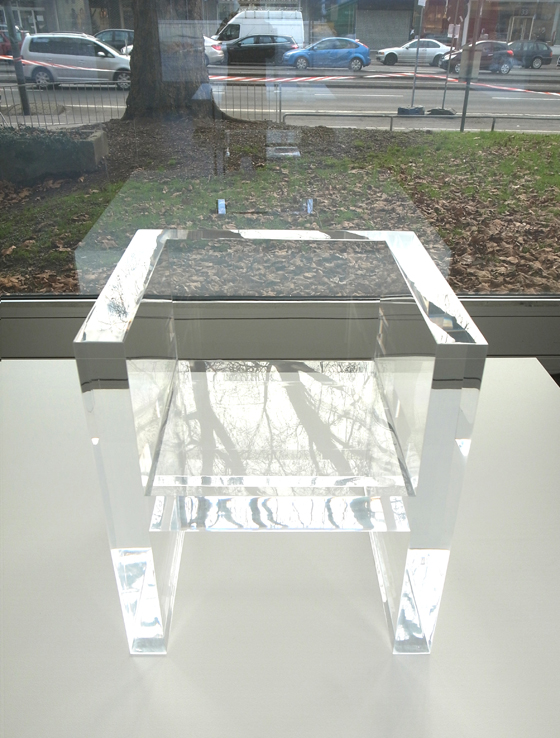
The title of Yoshioka's 2010 collection for Italian manufacturer Kartell, 'The Invisibles', engages with the fantasy of furniture that escapes the visual grasp of the eye, as explored in the past by, among others designers, Marcel Breuer
×The considered simplicity of Yoshioka's designs would seem to dovetail with the man's personality, too. There's an air of quietness about him when he talks about his work, an economy of verbal expression. But don't be fooled. There's a confidence there also, borne out of his commitment, perhaps, to the clearly identified set of ideas and aesthetics he has engaged with for so long. What follows is our conversation (thanks to Yoshioka's skilled interpreter, who ensured nothing was lost in translation), where we discuss the meaning of his ongoing fascination with transparency and lightness, the relation between function and emotion in design, and why it's OK to throw one of his chairs in a pool. If you want to, that is. No pressure.
'Memory' chair (2010) by Tokujin Yoshioka for Moroso, which features a layer of light, recycled aluminium that can be 'moulded' by the user into different forms, almost denying the hand of the designer

'Memory' chair (2010) by Tokujin Yoshioka for Moroso, which features a layer of light, recycled aluminium that can be 'moulded' by the user into different forms, almost denying the hand of the designer
×…..
What does this award mean to you?
I received the Mentor Prize [this year awarded by A&W magazine to Polish designer Oskar Zieta] ten years ago. This was the first prize I ever got. It was a great experience. So, ten years later, to win the Designer of the Year Award is a great honour.
To what extent are you motivated by professional recognition?
Well, this kind of recognition gives me the opportunity to create how I want to and also validates my ideas. It means I must be doing something right.
Tokujin Yoshioka's 'Paper Cloud' sofa for Moroso, first shown at the 2009 Salone del Mobile; photo Alessandro Paderni

Tokujin Yoshioka's 'Paper Cloud' sofa for Moroso, first shown at the 2009 Salone del Mobile; photo Alessandro Paderni
×What are the effects, do you think, of renown, or, indeed, celebrity, on your work as a designer in real terms?
This notion of celebrity is something I don't even think about. It's not important for me. Just look at how I'm dressed!
Your work displays strong emphases on both concept and aesthetics. What is the relation between the two for you? Is one predicated on the other?
In my early twenties, I was always trying to explain the concept behind my work. But I don't do this anymore. The concept isn't so important for me, now. Being symbolic is important. A concept comes out of this, out of simplicity.
Now you see it, now you don't: Yoshioka's armchair from his 'Invisibles' collection for Kartell plays with the fantasy of invisibility and immateriality
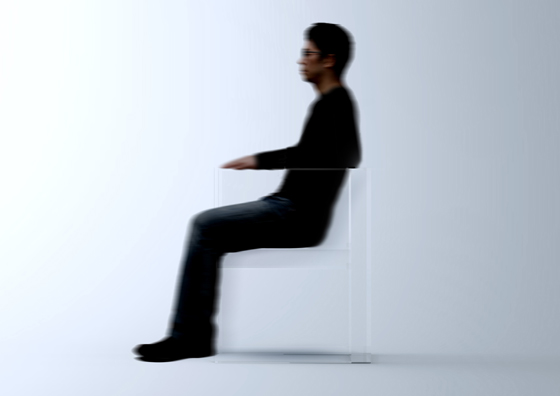
Now you see it, now you don't: Yoshioka's armchair from his 'Invisibles' collection for Kartell plays with the fantasy of invisibility and immateriality
×Is the simplicity to which your work adheres a reaction, perhaps, to the excesses we've seen in design over the last few years?
What we don't need is to copy or to repeat what's already been designed. But being simple doesn't necessarily mean that something is needed. I think there is too much narcissism and selfishness in design. What's important is to create work that leaves an imprint on people's hearts and emotions.
What then is the relation between utilitarian function and emotion?
People's feelings are the most important thing. Function has already been covered to a certain extent. Feelings are also a function. If you sit on a chair just once in your lifetime and you're happy with this experience, that is enough. Function can't be defined in just one way.
Tokujin Yoshioka's 'Snowflake' installation, comprising thousands of plastic sticks, at the Kartell showroom in Milan during last year's Salone del Mobile
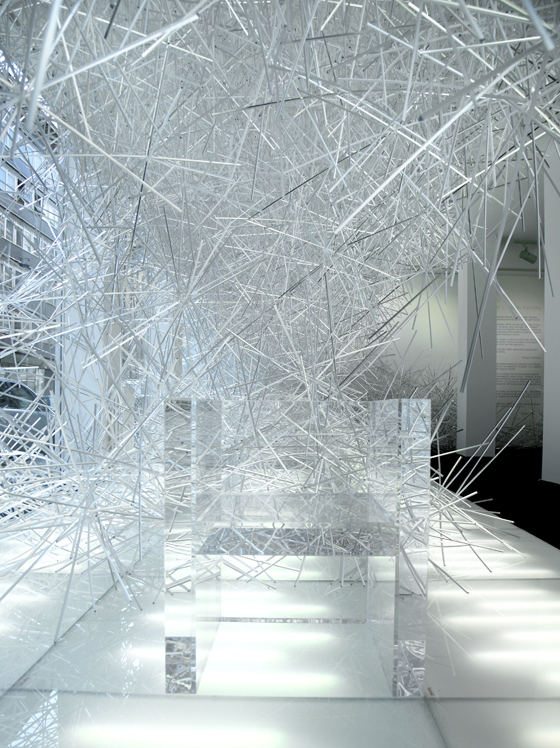
Tokujin Yoshioka's 'Snowflake' installation, comprising thousands of plastic sticks, at the Kartell showroom in Milan during last year's Salone del Mobile
×Your continued revisiting of transparency and of lightness in general: does this mean something beyond the aesthetic?
Maybe I don't like objects. But, to be honest, I'm not sure why I do certain things. But I've started to analyse the way I work more. I know I really like light. Transparency captures and reflects or embodies light. Light transformed into an object.
I'm really interested in new discoveries, in how to impress people. I always think about this. For me, it's about designing the senses first of all and not the objects, like, for example, my window displays for Hermès.
Perpetual lightness: Yoshioka's installation 'The Snow' at the Mori Art Museum in Tokyo, 2010
Could one possible way of reading the use of transparency is your work be as a response to the proliferation of design and the hyper-consumptive times we live in, do you think?
Well, it's important to be careful about what you bring into this world. This includes the option of not creating anything. Before, we used to think that happiness was buying and consuming, but now we know that this isn't true. We have to consider what really fulfils you. Maybe this doesn't have anything to do with objects at all.
Air play: Maison Hermès window display, Tokyo, 19 November 2009 to 19 January 2010; courtesy of Hermès Japon
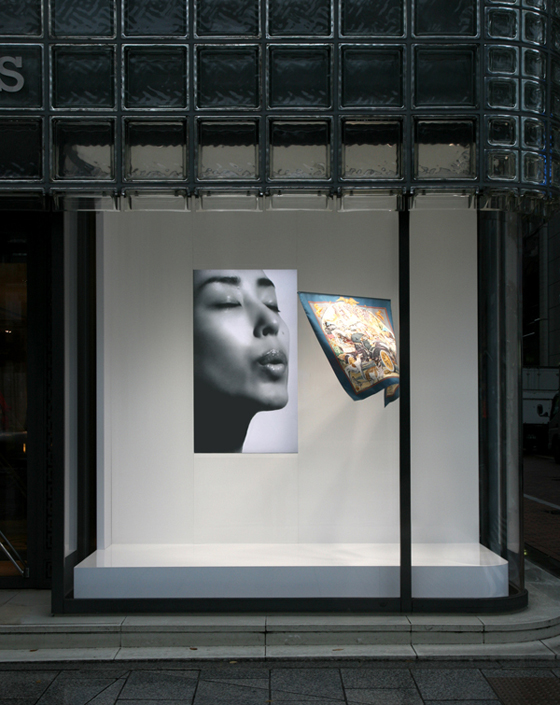
Air play: Maison Hermès window display, Tokyo, 19 November 2009 to 19 January 2010; courtesy of Hermès Japon
×You've designed a number of compelling installations, which, once again, embrace the idea of lightness. To what extent is space a conscious part of your consideration when you're designing something for industrial production, for example, the possible spaces in which the product might be used?
I don't think about space at all in this respect. It's a free choice how a product is used. Very free. You could throw this bench in a pool, for example...
I can see right through your words: Yoshioka's transparent mobile phone, X-RAY, for telecommunications company KDDI, 2010
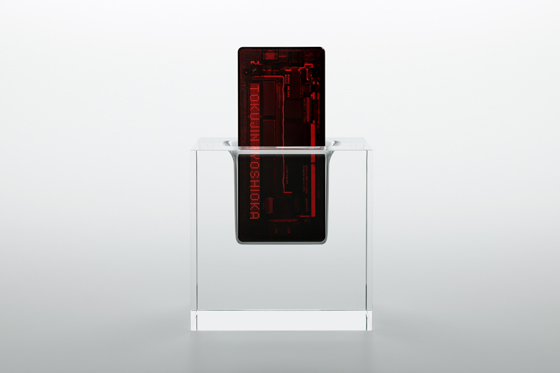
I can see right through your words: Yoshioka's transparent mobile phone, X-RAY, for telecommunications company KDDI, 2010
×You ended an interview recently by asking what the purpose of design might be. I wondered if you might attempt to answer this question yourself.
Design always has to have a purpose. Particularly if it's a commission from a manufacturer. You have to create something relevant and new. But when I was small, I used to watch a lot of Japanese animation. In those days, animation brought hope and brightness to otherwise dark times. This inspired me.
What do you think you would have done if you hadn't decided to be a designer?
It was my destiny to be a designer. It wasn't really a question of making a professional decision, but rather it's what I do. In fact, it's the only thing I can do.
Many thanks, Tokujin.
.....

